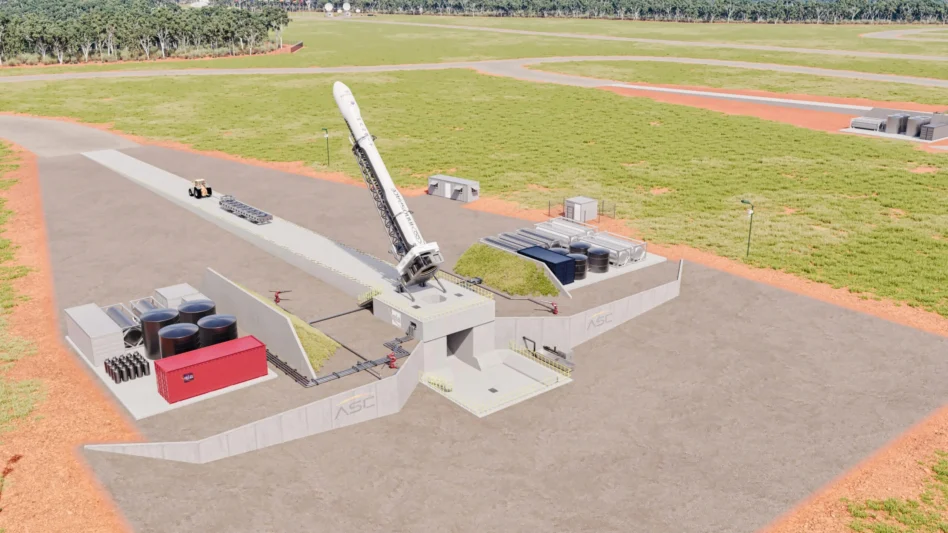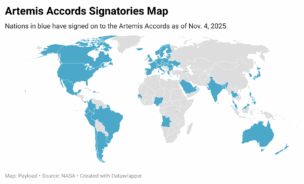French small rocket startup Sirius Space Services signed an agreement this week with Equatorial Launch Australia to launch from the Australian spaceport starting in 2026.
Siriusly: Under the deal, Sirius will become a resident launcher at Arnhem Space Centre in 2025, with the first test flight of its SIRIUS 1 rocket coming in 2026 and the first launch of its larger SIRIUS 13 following in 2027.
ELA provides its resident launchers an ELA-built horizontal integration facility, for which the rocket company pays rent. They also get two launch pads and an interface plate that’s unique to their rocket, giving ELA a lot of flexibility.
“If a company goes bankrupt or doesn’t want to launch with us anymore, we don’t have to rebuild the pad, we can just use a new interface plate,” said ELA CEO Michael Jones. “If someone blows up a pad, we can move their interface plate and move them to another pad.”
Global launch: All of ELA’s customers are international, evenly split between small launchers in Asia, Europe, and the US, Jones said. As a result, he’s tasked with keeping a pulse on the global launch market and has noticed a few trends:
- The American small-to-medium launch market has “fallen into a hole” over the past year and a half, according to Jones, who pointed to problems faced by Astra, ABL, and Relativity as evidence. “The US is now lagging massively behind Europe from my perspective.”
- A surge in demand for space assets in Asia, where the island geography and ocean borders increase the need for things like EO and space-based connectivity. In fact, South Korea’s INNOSPACE signed an agreement in August 2023 to become the first resident launcher at Arnhem.
Location, location, location: Australia offers a lot of benefits for space companies, including political stability, a location near the equator, close ties to international partners, and a large country with a small population, offering launchers the ability to take off over land. ELA’s launch pad also doesn’t have to contend with the commercial flight and boat traffic that is present around Cape Canaveral, Jones said.
But it also offers some challenges—namely, that it’s thousands of miles away from customers. Jones said ELA has tried to lessen this burden by working with shipping companies and customs to make the three-week boat trip from California to Australia as easy as possible.




